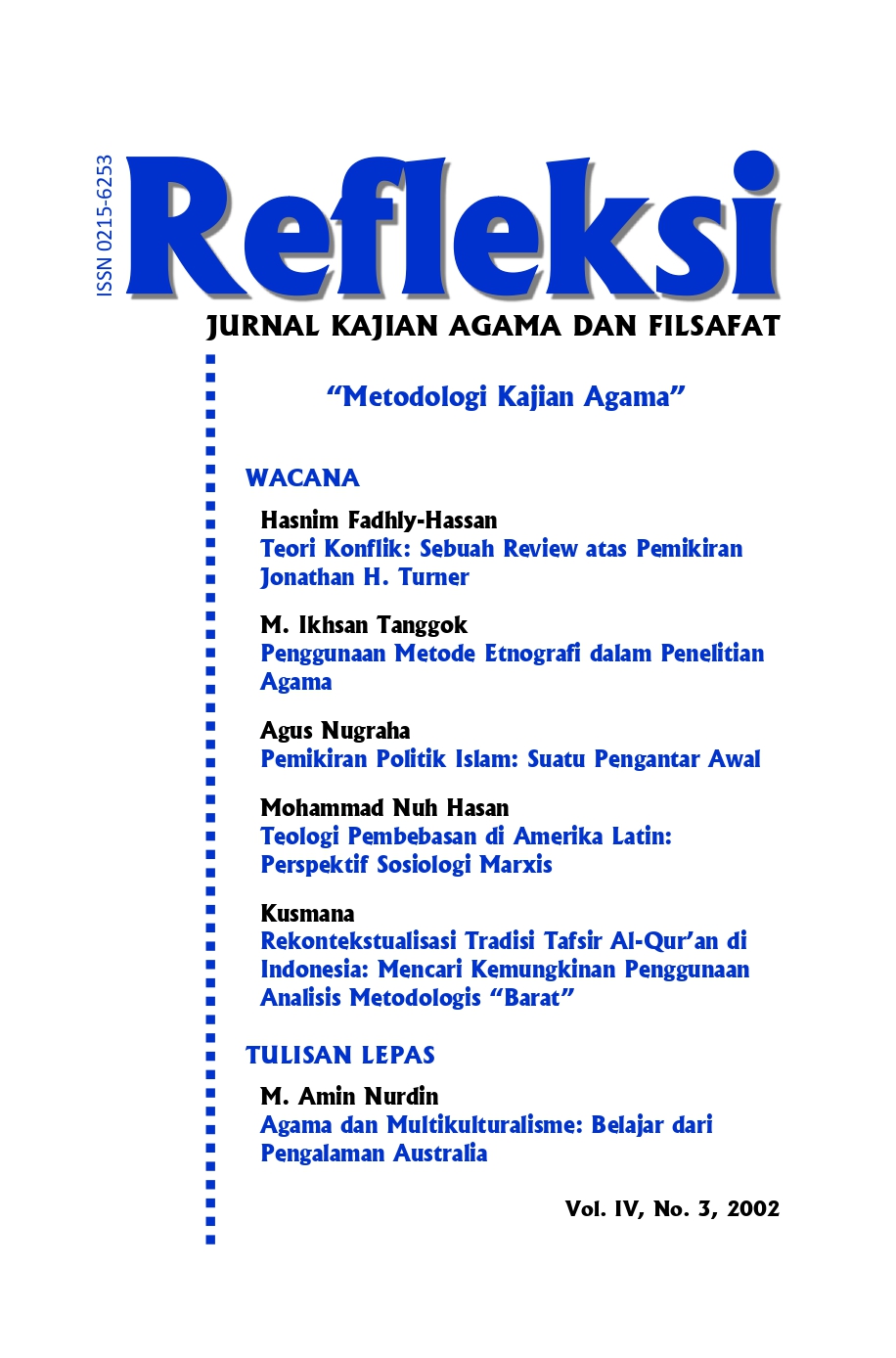Penggunaan Metode Etnografi dalam Penelitian Agama
DOI:
https://doi.org/10.15408/ref.v4i3.44936Keywords:
ethnography, qualitative research, Clifford Geertz, Javanese religion, symbolic anthropology, Victor Turner, Balinese culture, fieldwork methodologyAbstract
This paper discusses ethnography, a qualitative research method commonly used in anthropological and social science studies to understand social phenomena in the field. One of the most notable American anthropologists who employed this method in studying Javanese religion was Clifford Geertz, along with his wife, Hildred Geertz. In the 1950s, Clifford Geertz conducted research in Mojokuto, East Java, leading to his well-known Santri-Abangan-Priyayi trichotomy, published in The Religion of Java (1960). Hildred Geertz, in the same period, studied Javanese family structures, resulting in her dissertation, later translated into Indonesian as Keluarga Jawa. Beyond Java, Clifford Geertz also conducted research in Bali, culminating in works such as Negara: The Theatre State in Nineteenth-Century Bali (1980) and his famous essay on Balinese cockfighting, Deep Play: Notes on the Balinese Cockfight (1973). His symbolic anthropology approach is often compared to that of Victor Turner, another prominent scholar who focused on African ritual processes, best exemplified in The Ritual Process: Structure and Anti-Structure (1977). This paper explores the ethnographic method by discussing its definition, historical background, objectives, procedural framework, and key considerations for its application in religious studies and social research.References
Bohannan, Paul & Glazer, Mark, Editor, High Points in Anthropology, New York: Alfred A. Knopf, 1988.
Creswell, John W., Research Design Qualitative & Quantitative Approaches, California: SAGE Publications, Inc., 1998.
Denzin, Norman K dan Lincoln Yooa S (Editors), Handbook of Qualitative Research, California: SAGE Publications, Inc., 1994.
Geertz, Clifford, Mojokuto: Dinamika Sosial Sebuah Kota di Jawa, Jakarta: Grafiti Pers, 1986.
—————. The Interpretation of Cultures, New York: Basic Books, Inc., 1973.
—————. Abangan, Santri, Priyayi dalam Masyarakat Jawa, Jakarta: Pustaka Jaya, 1981.
—————. Negara Teater, Kerajaan-kerajaan di Bali Abad Kesembilan Belas, Yogyakarta: Bentang, 2000.
Geertz, Hildred, Keluarga Jawa (Terjemahan), Jakarta: Grafiti Pers, 1985.
Guba, Edon G. (Editor), The Paradigm Dialog, California: SAGE Publications, Inc., 1990.
Jamhari, “Metode Etnografi” (Makalah Seminar), Ciawi Bogor, 2000.
Koentjaeaningrat, Pengantar Antropologi II, Jakarta: Rineka Cipta, 1998.
Koentjaraningrat, Sejarah Teori Antropologi I, Jakarta: UI Press, 1986.
Moleong, Lexi J., Metodologi Penelitian Kualitatif, Bandung: Rosda Karya, 1998.
Neuman, W. Lawrence, Social Research Methods: Qualitative and Quantitative Research, America: Allyn and Bacon, 1991.
Spradley, James P., Metode Etnografi (Terjemahan), Yogyakarta: Tiara Wacana, 1997.
Suparlan, Parsudi. Orang Sakai Di Riau: Masyarakat Terasing dalam Masyarakat Indonesia, Jakarta: Yayasan Obor, 1994.
—————. “Paradigma Naturalistik dalam Penelitian Pendidikan: Pendekatan Kualitatif dan Penggunaannya”, Jakarta: Antropologi Indonesia, 1997.








